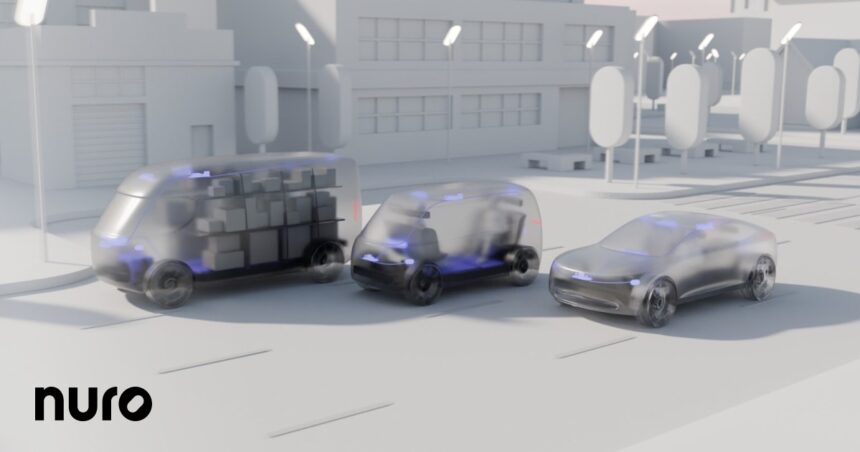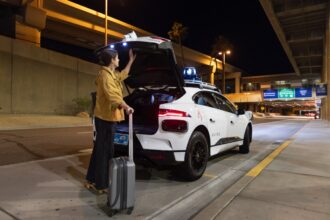After multiple rounds of layoffs in 2022 and 2023, Nuro is pivoting its business strategy to focus more on the startup’s core autonomous driving technology instead of owning and operating a fleet of low-speed, on-road delivery bots.
The company said on Wednesday it would start licensing its autonomous vehicle technology to automakers and mobility providers, like ride-hail and delivery companies.
Nuro had been a darling of the AV industry, raising over $2 billion from high-profile investors, but its previous business model had it burning cash fast. As the company’s founders said at the time of last year’s layoffs, the race to commercial delivery deployments comes at a cost, and by focusing on developing the AI, Nuro would be able to extend its runway from 1.5 years to 3.5 years until the unit economics make sense.
Nuro said it will now pursue two parallel go-to-market strategies: The first is similar to Nuro’s original offering — it will offer a full Level 4 autonomous driving product, including the AV software and hardware, to goods delivery and passenger mobility services. The only difference is that Nuro will no longer build the cute delivery vehicles that the company is known for. It had paused its partnership with Chinese EV-maker BYD to manufacture its third-generation R3 delivery bot last year.
The second strategy involves working with OEMs and their parts and services suppliers to build automated driving products for consumer vehicles that will range from Level 2 through to Level 4 driving systems.
The SAE defines Level 4 autonomy as a driving system that can drive itself without human intervention in certain circumstances. Level 2 and Level 3 are versions of advanced driving systems that can perform some automated driving tasks but still require the human driver to stay attentive and take over.
“We believe that it’s within reach to provide [L4] on personally owned vehicles, so the consumer use case of full L4 technology is what we’re most excited about,” Dave Ferguson, Nuro’s co-founder and president, told TechCrunch.
Ferguson told TechCrunch that Nuro still has plenty of runway to work with, and doesn’t need to raise a new round to fund this business shift.
Nuro has not signed any partnerships yet, but it does have existing relationships with Uber and Toyota through its investor Woven Capital, the venture arm of Toyota subsidiary, Woven Planet.
Nuro isn’t the only company to realize that deploying and operating self-driving vehicles is like throwing cash into fire and that it’s more financially feasible to provide the driver-as-a-service.
The startup will compete with others in the space like the U.K.’s Wayve, which recently announced a partnership with Uber and also sells its autonomous driving tech to OEMs; and Mobileye, which is working with automakers like Porsche to provide automated driving technology.
Nuro’s new business strategy comes a little over a month after the California Department of Motor Vehicles granted it approval to test its R3 bot in four Bay Area cities. The permit also allowed Nuro to test its tech at 45 miles per hour, up from 25 miles per hour.
At the time, Ferguson told TechCrunch Nuro wasn’t planning to deploy the R3, but would instead focus on developing and testing the autonomous tech.
Nuro has been drip-feeding teasers about a new business strategy that goes beyond goods delivery for the past month. The startup last month announced a “road trip” across 53 U.S. metro areas to collect data to train its AI for urban, rural and highway driving. In late August, Nuro posted that its 4th generation Nuro Driver, powered by Nvidia’s Drive Thor with Arm Neoverse tech, enables “L4 AI-first autonomous driving for multiple vehicle types.”
Nuro said that in four years, it has driven over 1 million autonomous miles on public roads – both with a safety driver behind the wheel and without – across Arizona, Texas and California as part of general testing and delivery partnerships with Uber Eats, Domino’s and FedEx.
Ferguson said that Nuro’s autonomous driving software prioritizes safety through its AI architecture. The AV Driver generates every action through end-to-end foundational models, but a more traditional robotics system operates in parallel as a backup. The backup system validates every step the AI Driver makes in real time to ensure it’s not violating any constraints, like the dynamic limits of the vehicle or road rules.
“It’s not a question of if, but when L4 autonomy will become widespread,” said Jiajun Zhu, co-founder and CEO at Nuro, in a statement.
Source : Techcrunch






